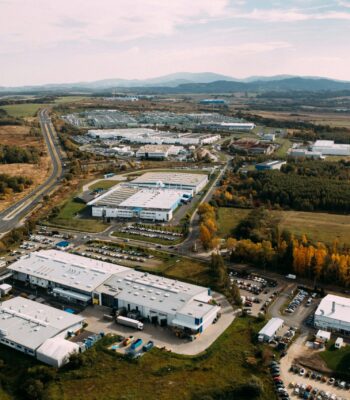Scope 3 emissions are the biggest chunk of emissions for most companies—and the most opaque. Access to scope 3 emissions data depends on external parties, like your suppliers, who may or may not have ever calculated their own emissions, let alone shared the data with a third party. But if your company aims to achieve supply chain decarbonization, accurate, specific, and up-to-date supplier data is non-negotiable.
We’ve worked with large companies over the last 15 years to decarbonize their operations and complex supply chains. We’ve learned to thrive in the complexity by distilling the process into four key principles:
- Tailor data collection to supplier maturity
- Aim for best practice over minimum compliance
- Prioritize supplier engagement based on potential impact
- Partner with suppliers via education and support
To reduce your company’s supply chain emissions most effectively, use these four strategies as a framework.
Tailor data collection to supplier maturity
Data is the foundation of scope 3 emissions management; in order to impactfully decarbonize, the data must be accurate, specific, and detailed. Some of your suppliers have likely already publicly reported their emissions data—others may have yet to start collecting data, let alone reporting it to a third party. Each group will require a different approach.
High maturity suppliers
For suppliers that have already publicly reported their emissions to a reporting body like the CDP, use the data that’s readily available online. Public disclosures provide you with emissions data, verifications, and science-based targets for the reporting company; all you have to do is search for your suppliers’ disclosure and collate the data. A tool like Optera’s Supply Chain Manager, which includes a proprietary dataset covering over 10,000 companies, makes this step nearly automatic.
Of course, there’s always room to dig deeper than a public disclosure. Consider surveying this group of mature suppliers for facility-level or product-level emissions data to achieve greater specificity and actionability.
Medium maturity suppliers
Some suppliers may have a sustainability program that has started collecting the data you need, but has not yet reported it publicly. Engage with them directly to understand their emissions —likely through a survey. Be aware that your suppliers may be experiencing survey fatigue; between data privacy, regulatory compliance, and ESG concerns, suppliers must respond to an abundance of surveys every year. Ask only what you need to know, and consider using a tool where suppliers can respond once annually to provide all their customers with the same information.
Low maturity suppliers
For suppliers who don’t yet have their own emissions data, there are options. They can provide you with their energy usage information, and you can calculate the relevant emissions factors. If they don’t have energy usage data, use estimates based on industry averages and other available data.
Non-participating suppliers
Some suppliers may choose not to engage with your supplier outreach efforts. Commodity averages and estimates fill in the gaps for these suppliers, ensuring that you have a comprehensive understanding of your scope 3, category 1 emissions.
Aim for best practice over minimum compliance
Today’s scope 3 best practices are tomorrow’s industry standards and requirements—so aiming high puts you ahead of the curve. For example, we recently rolled out cradle-to-gate accounting as part of Supply Chain Manager, allowing our customers to capture their suppliers’ scope 3, category 1 emissions and allocate them to their own purchased goods and services calculations. While this methodology is currently aligned with leading regulations like CBAM and CSRD, it will increasingly become the standard for all regulatory compliance.
Prioritize supplier engagement based on potential impact
Risk and opportunity for emissions reduction is not equal across the board. Develop a set of supplier standards across data quality, targets, and action to segment suppliers according to their performance. Then, identify your highest-priority suppliers and plan to engage with them more deeply. “Highest priority” can mean a few different things:
- Suppliers with the greatest potential reductions
- Suppliers with whom you spend the most
- Suppliers for which your company’s spend makes up a large proportion of revenue (meaning your company has a greater share of influence)
- For more guidance on prioritizing suppliers, check out this article
This ensures that you are expending your time and resources where they can have the greatest impact.
Partner with suppliers via education and support
Decarbonization is a team effort. Act as a supporting partner to your suppliers, recognizing the effort it will take for them to decarbonize and providing the tools and education they’ll need to get there. Survey fatigue is real, and depending on their size, participating in sustainability initiatives may require a herculean effort on the part of some suppliers. By meeting your suppliers where they are today, you can form a collaborative environment and relationships that drive real change.
Take Hewlett Packard Enterprise as an example—as part of their commitment to become a net-zero enterprise across the entire value chain by 2040, they’ve encouraged their suppliers to set their own science-based targets. They identify areas where each supplier has room for improvement, share that information with the suppliers themselves, send resources, and collaborate back-and-forth on how to tackle greenhouse gas emissions together.
Supply chain decarbonization: Adding value for both parties
Effectively engaging suppliers for meaningful supply chain decarbonization starts by making participation in your sustainability programs as easy as possible. The goal should be to add value—for both you and your suppliers—every step of the way. After all, greater adoption means greater reductions in emissions.


